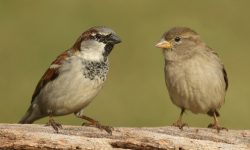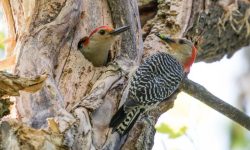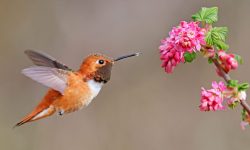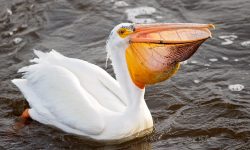Crows are among the most intelligent birds on the planet. Their remarkable problem-solving skills, adaptability, and fascinating behaviors make them stand out in the avian world. One question often asked by bird enthusiasts and curious minds alike is: what do crows eat? You might be surprised to learn that their diet is incredibly diverse.
In this complete guide, we’ll dive deep into the feeding habits of crows, explore what they consume in different environments, and reveal some truly astonishing facts about their culinary preferences.
Introduction to Crow Diets
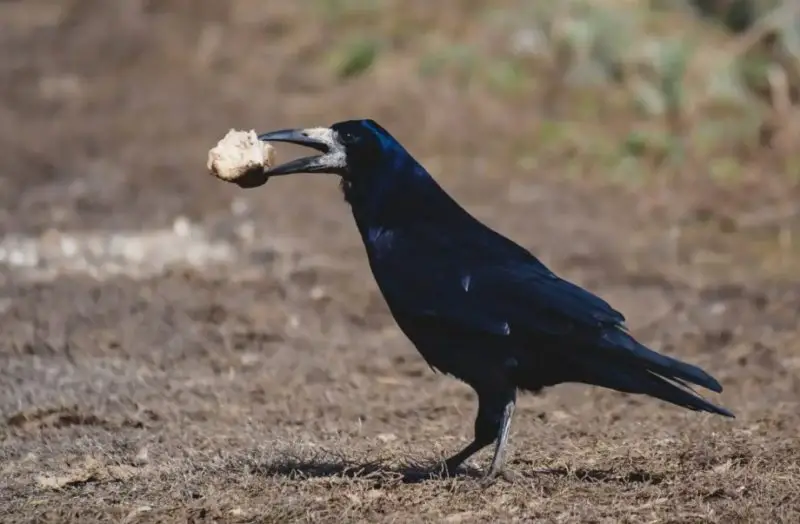
Crows, members of the fascinating Corvidae family, share their lineage with other highly intelligent birds such as ravens, jays, and magpies. Renowned for their adaptability and problem-solving abilities, crows have successfully colonized almost every continent except Antarctica. One of the core reasons behind their widespread success lies in their incredibly versatile diet. Unlike species that rely heavily on specific food sources, crows are true opportunistic feeders, adjusting their eating habits to match whatever resources are available in their environment.
From dense forests and expansive grasslands to urban jungles and agricultural lands, crows can find nourishment virtually anywhere. Their menu shifts effortlessly depending on the season, weather, and proximity to human settlements. This dietary flexibility not only supports their survival but also fuels their social complexity. Food-sharing behaviors, intricate hunting techniques, and even strategic planning for food storage are all reflections of the crow’s remarkable cognitive abilities.
General Overview — What Do Crows Eat?
In a word: almost everything. Crows are true omnivores, meaning they thrive on both animal and plant-based foods. Their diet is incredibly diverse and largely depends on what is seasonally or locally available. Whether in remote forests or the heart of bustling cities, crows demonstrate remarkable flexibility in their food choices. This dietary adaptability not only supports their survival but also allows them to flourish in varied environments across the globe.
Animal-Based Foods
Crows often seek out protein-rich animal sources as part of their daily intake. Small animals and insects form a significant portion of their diet. They are known to hunt and consume beetles, caterpillars, grasshoppers, and other insects. Earthworms, which are abundant after rain, are another easy target. When opportunities arise, crows will also prey on small rodents such as mice or scavenge frogs and tadpoles from wetlands and ponds.
In addition to active hunting, crows are not shy about raiding nests. They frequently consume eggs and fledglings from other bird species, showcasing their opportunistic instincts. Fish, particularly those stranded near shallow waters, can also become a part of their menu. Perhaps one of the most vital ecological roles crows play is through their consumption of carrion. By feeding on dead animals, they contribute to natural waste removal and help limit the spread of diseases within ecosystems.
Plant-Based Foods
While animal prey provides crucial protein, crows equally enjoy a rich variety of plant-based foods. Fruits such as berries, apples, and cherries often attract these clever birds, especially during the harvest season. Nuts, including walnuts, acorns, and pecans, serve as important energy sources, and crows are known to exhibit sophisticated behaviors like dropping nuts onto roads for cars to crack them open.
Seeds and grains also form a substantial part of their diet. Wheat, corn, barley, and other agricultural crops are readily consumed when available, sometimes leading to conflicts with farmers. Additionally, crows will eat vegetables like corn kernels and peas straight from the field. During colder months when insects and small animals are scarce, their reliance on plant matter increases significantly, highlighting their remarkable ability to adapt to seasonal changes in food availability.
What Do Crows Eat in the Wild?
When living in their natural habitats far from human influence, crows maintain a highly varied diet that shifts with the changing seasons. Their adaptability allows them to make use of the food sources available in forests, mountains, grasslands, and coastal regions. The wild offers a broad range of options, and crows adjust their feeding strategies accordingly to ensure survival year-round.
Forest Crows
In dense forest environments, crows rely on a mixture of animal and plant-based foods found within the trees and forest floor. During the warmer months of spring and summer, their diet leans heavily toward protein-rich options. Forest insects such as caterpillars and beetles provide ample nutrition, while tree frogs are also hunted when available. Wild berries offer a burst of energy, particularly in late summer, when fruits are most abundant. Nuts from oak trees and other forest species become crucial food sources in the fall, giving crows the fat reserves they need to endure the colder months.
Mushrooms, another forest offering, occasionally feature in their diet. However, crows display an impressive ability to distinguish edible mushrooms from poisonous varieties, likely through learned behavior and observation. As winter sets in and insects grow scarce, forest crows increasingly depend on stored food, seeds, and fallen nuts to meet their dietary needs.
Coastal Crows
In coastal regions, the diet of crows changes dramatically to take advantage of marine ecosystems. Small fish washed ashore or found in shallow waters serve as an important source of protein. Crustaceans, particularly small crabs, are eagerly hunted along rocky shores and tide pools. Mollusks, such as clams and mussels, also form a vital part of the coastal crow’s menu.
What is particularly fascinating about coastal crows is their innovative foraging behavior. When faced with hard-shelled prey like clams, they have been observed picking up the shells and dropping them from a height onto rocks to crack them open. This clever use of gravity as a tool is a striking example of their problem-solving skills and adaptability. It also highlights just how versatile crows can be when it comes to finding and accessing difficult food sources in the wild.
What Do Crows Eat in Urban Areas?
Urban crows have adapted spectacularly to the bustling environments of modern cities. Far from being overwhelmed by human expansion, they have thrived by learning to exploit human waste, leftover food, and cultivated landscapes. Their remarkable intelligence and problem-solving skills have allowed them to make city living not only possible but highly successful. Observing urban crows gives valuable insight into their flexibility and their ability to turn almost any environment into a thriving habitat.
Scavenging
One of the most notable behaviors of urban crows is their skillful scavenging. City streets, parks, and residential neighborhoods provide an endless buffet for these opportunistic birds. Crows are often seen raiding trash cans, especially those without secure lids, in search of discarded food. They are also known to feed on roadkill, making use of food sources that other animals might ignore. Public spaces like picnic areas, playgrounds, and schoolyards are frequent targets, where dropped or abandoned food items offer easy meals.
Interestingly, crows have even learned to recognize intentional human behavior, sometimes waiting patiently near outdoor cafes or benches where people may share crumbs or scraps. Common items in an urban crow’s diet include French fries, pieces of bread, sandwiches, and fast food leftovers. This high-calorie intake can sometimes even improve their survival rates during harsher weather conditions, underscoring their ability to make the most of human presence.
Gardening and Crops
In suburban and peri-urban areas where homes often feature gardens and nearby farms, crows extend their foraging habits into cultivated spaces. They are particularly attracted to ripening crops and vegetables, with cornfields being a favored target during late summer. Tomatoes, peas, and pumpkins are other common choices, with crows frequently tearing into pumpkins to access the nutrient-rich seeds inside.
While some farmers and gardeners view them as pests, the relationship between crows and agriculture is more complex. By consuming large numbers of insects, grubs, and other small pests that can damage crops, crows actually contribute to natural pest control. Their presence can reduce the need for chemical pesticides, providing a small but valuable ecological service. This dual role—both destructive and beneficial—makes crows a fascinating study in how wildlife adapts to and interacts with human-modified landscapes.
Seasonal Changes in Crow Diets
Crows are masters of adapting their diet to match the shifting seasons. As food availability changes throughout the year, so too does their menu. This flexibility not only helps them survive through harsh winters and dry summers but also highlights their remarkable resourcefulness. Seasonal dietary shifts ensure that crows meet their nutritional needs for breeding, molting, and enduring periods of scarcity.
Spring and Summer
During the warmer months of spring and summer, the natural world bursts with life, providing crows with an abundance of animal-based food sources. Insects such as beetles, caterpillars, and grasshoppers become a primary target, offering an easy-to-catch and protein-rich food supply. Crows also turn their attention to bird eggs, raiding nests when the opportunity presents itself, and sometimes preying on vulnerable fledglings. Small mammals like young mice or voles, especially in areas with tall grasses or wooded cover, round out their springtime and summertime menu.
This heavy focus on protein is not coincidental. Breeding season demands a tremendous amount of energy, not just for courtship and nest-building but also for laying eggs, incubating them, and rearing hungry chicks. Animal protein provides the essential nutrients needed for chick growth and for adult crows to maintain their health and stamina during this demanding period.
Fall and Winter
As temperatures drop and the lively buzz of insects fades, crows must pivot to a more plant-based diet to survive. In the fall, forests and fields offer an abundance of nuts, seeds, and grains. Acorns from oak trees, kernels of corn left behind after harvest, and various grass seeds become vital food sources. Fruits that linger on bushes or trees, such as crabapples or wild berries, provide much-needed sugar and calories to help crows build fat reserves for the cold months ahead.
Winter presents the greatest challenge. Snow and ice cover much of the natural food supply, forcing crows to rely heavily on scavenging. They often search for carrion—dead animals exposed by melting snow or left behind by other predators. Roadkill along highways becomes a major source of sustenance. Their strong beaks and sharp intelligence allow them to take advantage of these opportunities, helping them survive when many other birds migrate south or perish from the cold. The ability of crows to switch between fresh prey, stored plant materials, and scavenged meat demonstrates their incredible dietary adaptability in the face of seasonal extremes.
Crow Intelligence and Eating Behavior
Crows are not just survivors—they are thinkers. Their approach to finding and securing food reflects a level of intelligence that rivals that of many primates. Unlike many birds that simply react to immediate hunger, crows often plan, strategize, and even manipulate their environment to ensure a steady food supply. This sophisticated behavior reveals the complex link between their mental capabilities and their eating habits.
Food Caching
One of the most fascinating behaviors observed in crows is food caching. Rather than consuming all their food at once, crows often hide surplus food items in secret spots to retrieve later. These hiding places might include cracks in tree bark, crevices between rocks, patches of loose soil, or even man-made structures. Remarkably, crows display an exceptional memory, accurately recalling the locations of dozens, sometimes hundreds, of these caches over extended periods.
Caching is more than just an act of survival; it demonstrates forward thinking. By preparing for future scarcity, crows show a level of foresight that is rare among animals. Observations have even noted crows deliberately deceiving onlookers by pretending to cache food in one spot while secretly hiding it elsewhere when they sense they are being watched. Such behavior suggests not only memory skills but also the ability to understand the perspectives of others—a sign of advanced cognitive function.
Tool Use
Perhaps even more astonishing is the ability of some crow species to use tools. The New Caledonian crow, in particular, has garnered international attention for its inventive use of sticks, leaves, and even crafted hooks to extract insects and grubs from tight crevices. These crows have been seen shaping twigs into specific tools, customizing them for particular tasks, and improving them through trial and error.
In laboratory experiments, New Caledonian crows have bent wires into hooks to retrieve out-of-reach treats—a problem-solving feat that even many mammals struggle to accomplish. In the wild, their tool use enables them to access food sources that would otherwise be unavailable, providing a major evolutionary advantage. The ability to craft and use tools not only highlights their intelligence but also their capacity for innovation, adaptability, and cultural learning, with young crows often learning tool-making techniques from older, more experienced individuals.
Through behaviors like caching and tool use, crows continually astonish researchers and nature lovers alike. Their relationship with food is a gateway into understanding their extraordinary minds and the sophisticated strategies they employ to thrive across a variety of environments.
Differences Between Species: Not All Crows Eat the Same
While all crows share a reputation for being highly adaptable omnivores, not every crow species has the exact same dietary preferences. Depending on where they live and the ecosystems they inhabit, different crow species have evolved to favor slightly different types of food. Environmental pressures, competition, and food availability have all shaped their eating habits in fascinating ways.
American Crow
The American crow (Corvus brachyrhynchos) is one of the most familiar and widespread crow species across North America. True to their reputation for versatility, American crows eat a remarkably broad range of foods. In rural areas, they forage in cornfields, feast on insects, and even catch small amphibians and reptiles. In suburban and urban settings, they become expert scavengers, picking through trash bins, raiding outdoor pet food bowls, and gathering scraps from parks and picnic areas.
Their ability to seamlessly shift between natural foraging and human-provided resources demonstrates their unparalleled adaptability. American crows also show seasonal changes in their diet, consuming more insects and small animals during the spring and summer and relying more on grains, nuts, and scavenged food during fall and winter.
Carrion Crow
The Carrion crow (Corvus corone), native to Europe and parts of Asia, exhibits dietary habits that lean more heavily toward scavenging animal remains compared to some other crow species. True to their name, carrion—dead and decaying animals—forms a significant portion of their diet. They play an important ecological role in cleaning up carcasses, helping to prevent the spread of disease.
However, Carrion crows are far from strict scavengers. They also consume insects, earthworms, fruits like cherries and berries, and food waste left behind by humans. In farmland regions, they may feed on grain crops, and like their American relatives, they are quick to adapt to urban environments where discarded food is plentiful.
House Crow
The House crow (Corvus splendens) is a master urban adapter, thriving primarily in cities and towns across South Asia, East Africa, and other regions where they have been introduced. Their diet heavily revolves around human refuse. In bustling cities, House crows are a common sight rummaging through garbage heaps, picking up food scraps from markets, and even stealing directly from outdoor eateries.
They are opportunistic feeders, consuming everything from rice and bread to fish scraps and fruit peels. In coastal areas, they sometimes supplement their diet with small fish and crabs. Their close association with human populations has made House crows one of the most successful—and sometimes controversial—urban birds in the world.
Crows and Human Interaction Through Food
Throughout history, humans and crows have shared a complicated but fascinating relationship, much of which revolves around food. Crows are highly observant creatures, quickly learning to exploit human food sources while simultaneously providing certain benefits to human communities. Whether viewed as helpful allies or pesky nuisances, the connection between humans and crows is deeply tied to their mutual need for sustenance.
Crows as Pest Controllers
In many agricultural settings, crows have proven to be unexpected allies. Farmers sometimes recognize the value of having crows around because these intelligent birds help control populations of harmful insects and small rodents. By feasting on caterpillars, beetles, field mice, and other pests, crows naturally reduce the damage inflicted on crops.
This biological pest control means that farmers may need fewer chemical pesticides, making crow activity a small but significant benefit to sustainable farming practices. Particularly during the growing season, when pest populations spike, crows can help maintain a healthier balance within the ecosystem of farms and gardens.
Crows as Pests
Despite their beneficial roles, crows are not always welcomed with open arms. In many cases, they become problematic, especially when their opportunistic feeding habits conflict with human interests. Crows are notorious for raiding crops, particularly corn, sunflower seeds, and fruits like cherries and grapes, leading to significant agricultural losses in some regions.
In urban areas, crows often invade garbage bins, scatter trash across streets, and steal food from picnickers, outdoor markets, and even restaurant patios. Their boldness and resourcefulness make them difficult to deter once they have established a food source. As a result, many cities and farmers view crows as pests, requiring creative and humane management strategies to minimize conflict.
Rather than aiming for eradication, many experts advocate for thoughtful coexistence. Strategies such as securing garbage bins, using bird deterrents in agricultural fields, and adjusting human behaviors can help manage crow populations while still allowing these remarkable birds to thrive alongside us.
FAQs About Crow Diets
Crows are fascinating creatures with highly adaptable diets, but many people still have questions about what these intelligent birds actually eat. Below, we answer some of the most common questions people ask about crow diets.
Do Crows Eat Other Birds?
Yes, crows do sometimes prey on other birds, particularly smaller ones. They are known to raid nests for eggs, and they may target nestlings or fledglings, especially during the spring breeding season when food resources are more competitive. While crows generally prefer a more varied diet, they are opportunistic feeders and will take advantage of vulnerable or easy-to-catch prey.
Do Crows Eat Human Food?
Absolutely. Crows are well-known for their ability to thrive in human environments, and a large part of their diet consists of human food scraps. They have an affinity for bread, meat, fruit, and processed snacks, often scavenging from trash bins, picnics, outdoor restaurants, and even from food offerings intentionally left by humans. Their attraction to human food makes them common visitors in urban areas and suburban neighborhoods.
Are Crows Carnivorous?
Crows are omnivores, meaning they consume both plant and animal matter. While they will eat a wide variety of foods, their diet is not strictly carnivorous. However, during certain times of the year—such as the breeding season when they need additional protein—they may lean more heavily on animal-based foods like insects, small mammals, eggs, and carrion. Crows’ ability to eat a balanced mix of foods allows them to adapt to changing environments and seasonal food availability.
Do Crows Eat Dead Animals?
Yes, crows are scavengers and will readily consume carrion, or dead animals, when it’s available. This is a significant part of their diet, especially in the colder months when other food sources might be scarcer. By eating decaying animals, crows play an important ecological role in cleaning up the environment and preventing the spread of disease. Their habit of eating carrion is also a key reason why they are considered vital members of the ecosystem, especially in rural and urban areas.
Conclusion
So, what do crows eat? The simple answer is almost anything they can find. From insects and small mammals to fruits, grains, and human leftovers, crows are masters of adaptation when it comes to their diet. Their incredible intelligence allows them to find food in environments ranging from remote forests to crowded cities.
Crows are not only survivors but innovators. Their diet reflects their resourcefulness and highlights why they have thrived in a world that continues to change rapidly. Next time you see a crow, take a moment to appreciate not just their cleverness, but also the incredible diversity of their menu!

